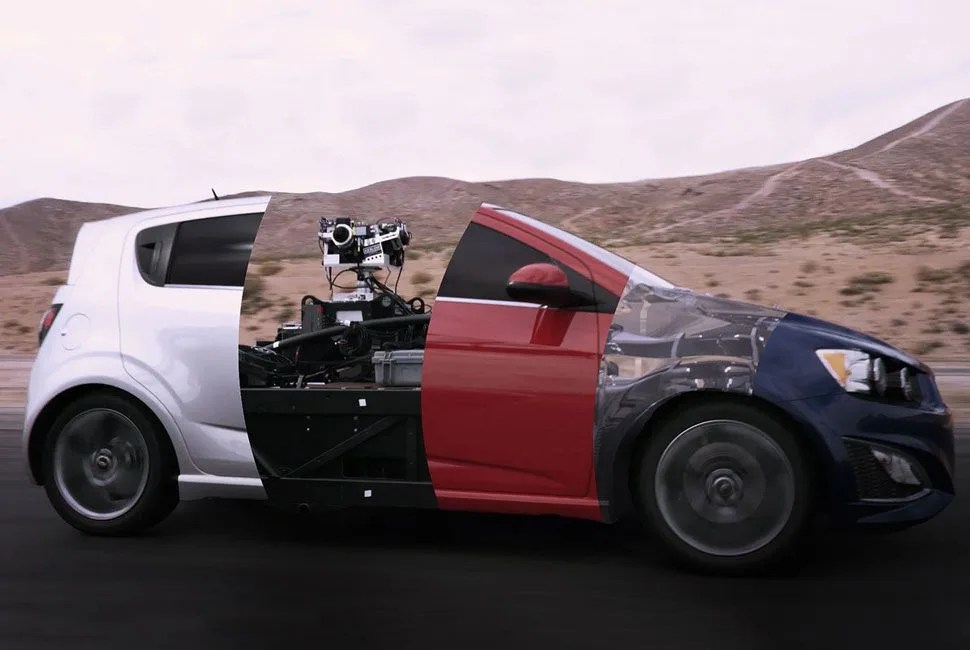Filming with a car is a massive headache. You need to coordinate a film crew, get permits and close off streets, hire a driver and a camera chase-car. If, for whatever reason, you can’t get the right subject car at the right time, the production can be derailed. In recent years, production companies have begun shooting with dummy cars that are altered in post. But one company has gone a step further by creating a shape-shifting, tech-filled dummy car that can make filming automotive content incredibly easy.
“It was about three years ago we had the idea, on the back of the first project that we did that was a fully CG car throughout,” says Alistar Thompson. He’s the International EVP for the Mill, a production company that’s done visual effects and other work on notable automotive advertisements, including the recent “Dodge Brothers” campaign and Volvo’s commercial that featured none other than Jean Claude Van Damme doing the splits between two semi trucks.
“We had a realization that the technology was good enough to achieve a fully CG car. The key thing was that it had to look right and believable,” he continued. “There was always a vehicle there, shot on camera, that was moving and that had to be going the right speed, and showing us how the car would react. So that gave us the idea for the Blackbird.”
In essence, the Blackbird is an incredibly adjustable skeleton, powered by an electric motor and littered with sensors and cameras, that can be re-skinned in post-production to mimic any car on the road. It’s an amazing technical achievement that Thompson says hasn’t been done before. “Lots of new technology is coming together to form this one thing.” The creation and refinement of new camera stabilization and systems, along with chassis adjustability, meant that from start to finish, the Blackbird took three years of planning and development.

One of the biggest technological challenges was keeping everything compact. Thompson states, “Every time you put a CG car skin on top of it, the real car has to be smaller in its template than any of those cars…you can’t have anything sticking out out front or back, ’cause you’d have to take it out digitally.” This means that the extensive camera and sensor equipment the Blackbird uses to digitally capture its surroundings — including 12 bespoke cameras on board — has to be super compact.
The Blackbird also needs to adjust to the dimensions of whatever car it’s meant to replicate so it can be properly re-skinned in post. The vehicle does this through a series of powerful electronically controlled actuators that stretch the car’s frame by up to four feet in wheelbase and 10 inches in width. Thompson says you can simply punch in the dimensions and the car adjusts automatically. “It takes literally minutes to do — you’ll see it happening in front of you. It’s very accurate,” says Thompson.
